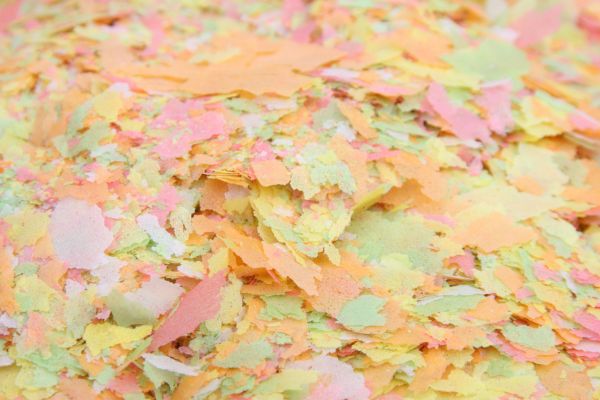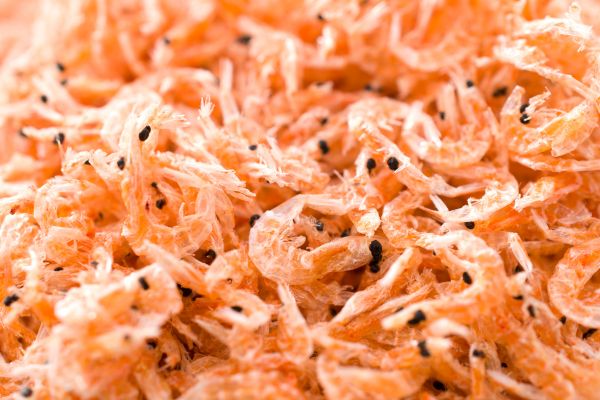Everyone loves a good meal. Whether it’s your mom’s homemade lasagna or that mouth-watering pizza from down the block, great food is guaranteed to make your day better. But it’s easy to get tired of even the best meal every day. You want variety – did you know your fish want the same thing? Speaking of… what do fish eat anyway?
There’s no singular answer to this question because every fish is different. What do goldfish eat? What do koi fish eat? How about betta? Just like you, your grandma and your best friend all have different favorite meals and unique nutritional needs, so do your fish. Various fish species prefer certain foods and have unique dietary requirements that affect what you should feed them.
Ready to find out what food is your fish’s equivalent of mom’s homemade lasagna? Let’s dive in…
Processed Dry Food
Processed dry food is a solid choice for many different species of freshwater and saltwater fish. They come in various shapes, sizes and formulations, so there’s something under this umbrella for almost every inhabitant of your tank.
Fish Flakes
“What do fish eat?” If you’re like most people, your mind jumps straight to fish flakes. These are often portrayed in movies, television shows and cartoons as a little shaker that drops food.
Flakes are the most common type of fish food and the easiest to use. They’re small, flakey pieces you sprinkle into the aquarium a pinch at a time. The top feeders will swim right to the top of the aquarium to eat it up.
But not all fish flakes are the same. It’s important to note what flakes you feed your fish. Saltwater and freshwater fish have different nutritional needs, so you should feed marine flakes to the former and tropical flakes to the latter. In addition to those generalized flakes, there are also ones specially formulated for particular species, such as cichlids and goldfish, so check if your fish require something similar.
How much do fish eat when they’re fed flakes? The answer varies, but it’s better to err on the side of caution to avoid overfeeding, which can be dangerous. A little bit goes a long way with your aquatic friends.

Wafers
In addition to flakes, there are also wafers, which are bigger and heavier. These are appropriate for larger fish, who have more significant appetites and nutritional needs. You may switch to wafers from a flake diet as your fish grows. You may also choose to offer both types of food. After all, even your fish enjoy variety in their diets!
Wafers are also an excellent choice for feeding bottom feeders in your tank. Since wafers are larger and heavier, they’ll sink to the bottom of the aquarium, whereas flakes are so small, they remain floating at the top.
Pellets
Pellets are typically somewhere between fish flakes and wagers. Some float, others sink quickly, and yet others sink slowly. Some even stick to the glass on the side of the tank, providing food for middle-feeders.
Which form of processed food you feed your fish should be based on whether they are saltwater or freshwater fish, large or small, and where in the aquarium they feed. You also need to consider the basic nutritional balance your fish requires. For example, carnivorous fish require diets consisting of 45-50% protein, while herbivorous fish require far less.
So, thoroughly research your specific fish when trying to answer, “What do fish eat?” Put together a feeding plan that helps every species get what they need to thrive.
Live and Live-Like Foods
Sometimes, processed foods aren’t enough to keep your fish healthy, and they need something that resembles prey they might catch in the wild. You have a few different options for addressing this.
Freeze-Dried
Freeze-dried organisms such as krill, bloodworms, plankton and similar make for a great dietary supplement. They provide lots of nutrition and flavor for your fish. An additional benefit of freeze-dried foods is that they’re less prone to transmitting disease than live foods like feeder fish sometimes do.

Frozen
Frozen foods are another option to consider. These include whole frozen organisms such as krill, brine shrimp, mysis, silversides, earthworms, chopped frozen clams and squid. There are even frozen food mixes specially formulated for species such as sharks and discus.
An advantage of frozen foods is that they’re closer to what fish eat in nature. This can help stimulate the appetites of fish that are rejecting other types of food.
Live Feed
If this doesn’t work, you may consider using a live feed. Doing so can activate the natural predatory instincts of a recent arrival refusing to eat other food in its new environment.
This might mean crustaceans such as crayfish. These are best purchased from bait shops, as wild ones may contain traces of pollution they’ve encountered, including pesticides, herbicides and fungicides. You should go for the small ones whose claws won’t injure your fish.
When thinking about the answer to “What do fish eat,” you may also consider insects such as crickets, mealworms, and more. Again, avoid wild ones, which may make your fish sick. If you’d like, you can feed them fish flakes or other food rich with nutrients that will be passed on to your fish.
Bait shops also stock a host of other critters you can use, including earthworms, snails, slugs, caterpillars and more.
Then there are feeder fish. Whether or not you use them is your decision, as there’s debate around whether it’s necessary or beneficial. If you do use feeder fish, there are a few rules to remember:
- Don’t give freshwater feeder fish to saltwater fish, or vice versa. This is not nutritionally appropriate and can cause health problems like liver disease.
- Don’t use store-bought feeder fish. These are often poorly taken care of and live in unsanitary tanks. As such, they can infect your fish with many different diseases and parasites. If you use feeder fish, breed your own.
- Don’t overdo it—most fish naturally only eat other fish as a dietary supplement, not a staple.
Regardless of what you decide about live fish, though, there is one thing you can be sure of: don’t feed beef heart to your fish. While this used to be recommended, it’s no longer considered advisable because the steroids used to raise cows can cause health problems in your fish.
Other Treats for Herbivorous Freshwater and Saltwater Fish
For the vegetarians in your aquarium, there are other foods you can use to give them some variety.
For example, spirulina is a very nutritious algae that’s great for saltwater fish like clownfish and tangs, as well as herbivorous cichlids. Seaweed is available in dried sheets and is appreciated by plecos, cichlids, and tangs. Romaine lettuce leaves, frozen peas, lima beans and cucumber slices are popular fish treats among appropriate species.
What Do Fish Eat? Now You Know the Answer!
Fish diets are as varied as humans, and when you have a big group with different tastes, it can be hard to figure out a feeding schedule that satisfies all their nutritional needs. But the above information should help you discern some of the best choices for your unique aquarium!
Still have questions? Living Art Aquatics is ready to answer them and provide guidance on all things fish-related! We can also design custom aquariums and aquarium cabinetry that make feeding your fish simple! Call us today for a consultation.
Editor’s Note: This blog was originally published in November of 2016 and was updated in March of 2024.





